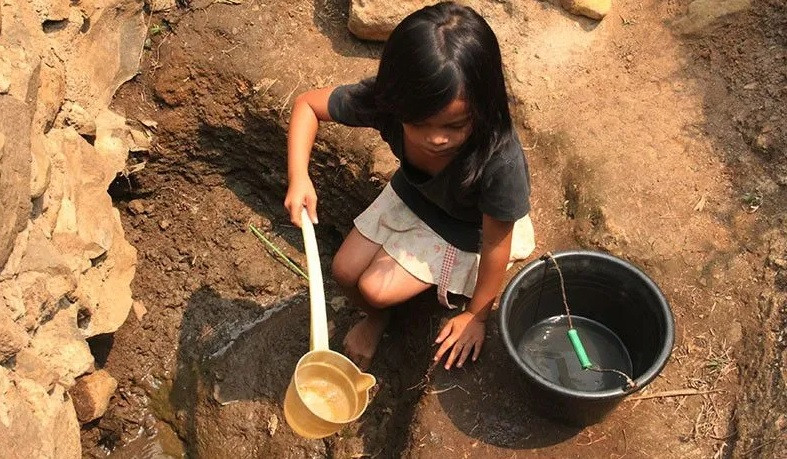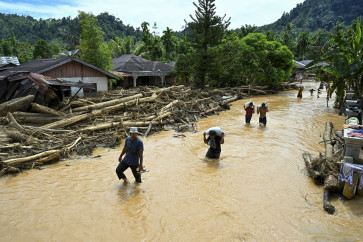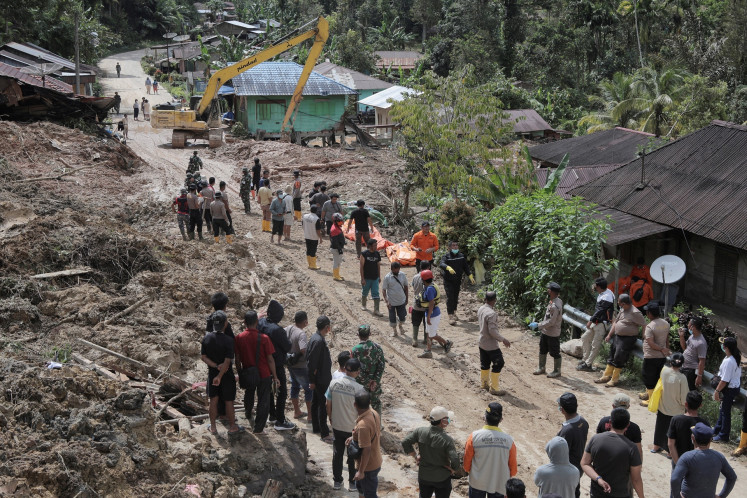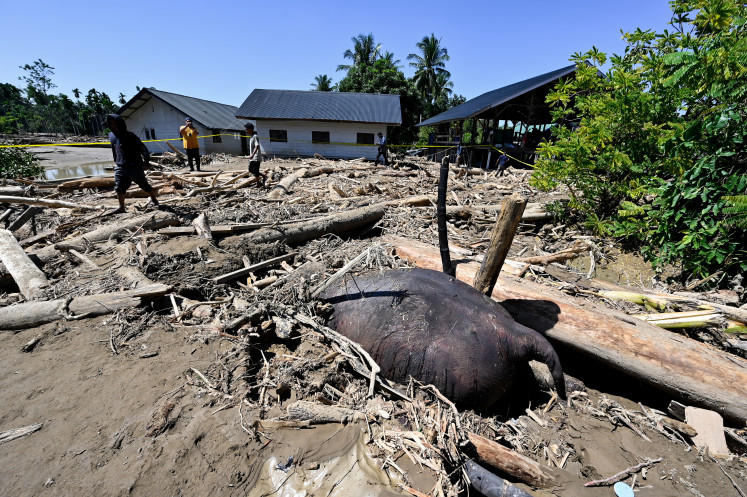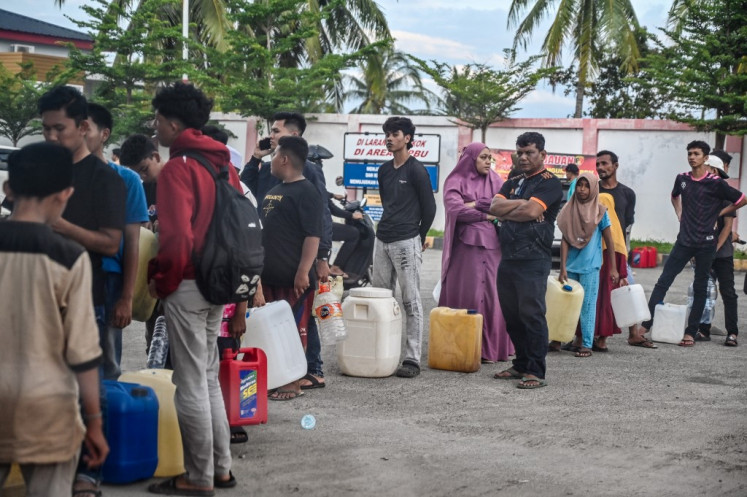Popular Reads
Top Results
Can't find what you're looking for?
View all search resultsPopular Reads
Top Results
Can't find what you're looking for?
View all search resultsCollective action to save our one and only Earth
Today, we are unfortunately already witnessing climate disruption and a large biodiversity loss, a result from our staggering consumption of natural resources.
Change text size
Gift Premium Articles
to Anyone
T
he year 2022 is a historic milestone for environmental sustainability, as it marks 50 years since the 1972 United Nations Conference on the Human Environment. Seen as the first international meeting on the environment, we saw a host of new global agreements enacted to collectively protect our planet.
However, during this half a century of rapid industrialization, our extraction of natural resources has grown to such a scale that we are now using the equivalent of 1.6 Earths to maintain our current way of life, according to the United Nations Environment Program (UNEP), and ecosystems cannot keep up with our demands.
As a result, our Earth is currently facing a triple planetary crisis: climate disruption, nature and biodiversity loss, and pollution and waste. Notably, changing local climates have disrupted Indonesia’s crucial agricultural industry, affecting livelihoods due to an increase in pests and diseases. Coastal cities like Jakarta continue to sink as global sea levels rise.
This fact makes this World Environment Day especially poignant, calling us to reflect on how there is “Only One Earth”. To preserve our planet, we need to recognize that production and consumption are not only key aspects of human life and intimately linked to our economic activity, they also have major environmental impacts, calling for our collective attention and action.
Today, we are unfortunately already witnessing climate disruption and a large biodiversity loss, a result from our staggering consumption of natural resources.
And yet, with the global population expected to reach 9.8 billion by 2050, global consumption will only continue to increase if we do not rethink our approach and learn to live with less. By reconfiguring our key systems – water, energy, and food – we can drastically prevent and even reverse the worst impact of Earth’s environmental decline.
One way for us to achieve this is by implementing sustainable solutions that are resource efficient at every level. While this is not something new to the sustainability movement, its momentum is very much lacking. The gap between what needs to be spent to adapt and what we are actually spending is widening. Estimated costs of adaptation continue to rise and could reach US$280-500 billion per year by 2050 for developing countries alone, UNEP says.
It is important for us – governments, businesses, and individuals – to think long-term and invest in the global transition to a more sustainable future, by committing our resources to replace solutions that power our everyday lives with sustainable ones.
Notably, water has been called the most crucial link in climate action, and also the most ignored. I recently spoke at a panel at this year’s World Economic Forum, where I was able to highlight how water plays an important, interconnected role across key economic, social, and environmental agendas.
Water is everywhere, playing an important role in the functioning of our industries, municipalities, and buildings. If we overlook and omit water in our strategies, we risk derailing our efforts on climate and decarbonization of industry sectors. Additionally, the sheer volume of water being moved and treated every day leads to greater energy consumption, consequently contributing to climate change.
There are ways to address this. For example, new technology featuring data analytics and sensors enables water systems to be intuitively adjusted based on current demand, reducing unnecessary energy use and reducing risks of water being wasted. Utilities globally are already doing this, by working closely with water solutions providers to explore different ways to integrate intelligence into their systems, such as cloud-based platforms into existing water technology.
While such solutions can call for significant investment, national and local governments can look at supporting businesses to adopt sustainable solutions through grants and subsidies. Indonesia has several dedicated platforms for pooling green or sustainability funding. These include the Sustainable Development Goals Indonesia One (SIO), which mobilizes funds from various sources, including private, institutional, and commercial sources.
And this doesn’t have to stop at the municipal level – our renewed relationship with water can start right at home. As homeowners we can adapt our consumption rate for the better through digitalization and data, keeping an eye on our water usage and responding with “water-wise” behavior, such as employing smart water meters, rainfall shutoff devices, and low-flow showers.
Beyond addressing our carbon footprint by being a water steward, tackling our vast use of resources is equally important. As manufacturers, we have all the responsibility to strive for circularity and promote reuse, repair, remanufacturing, and recycling, notably through recycling and reuse initiatives and implementing takeback programs. It is also crucial that industries ensure wastewater is effectively treated to a quality that makes it possible to feed back into our water cycles.
However, to establish best practices and compliance toward a sustainable supply chain, industry collaboration is key. Notably, as demand for rare earth metals is projected to reach 315,000 tons by 2030, the global Rare Earth Industry Association (REIA) launched a three-year project with organizations, including Grundfos, with the aim of using blockchain to help companies improve transparency and sustainability of their supply chains when it comes to critical and rare earth materials.
By combining expertise and knowledge across industries and academia, we can accomplish much more in advancing our supply chains toward our sustainable ambitions.
So, what’s to come in the next 50 years and beyond? Without major action to mitigate climate change, a third of the world’s population could live in a climate similar to the Sahara in just 50 years, according to the Natural Resources Defense Council.
Fifty years ago, the world’s first environmental movement was sparked in the form of the Stockholm Conference, and we have seen the power of what we can achieve through collective action. By working towards a common goal, we can achieve monumental change, and we have seen sustainability as a movement gain tremendous traction. However, we need to do more, and at a faster rate.
This World Environment Day, let us continue to march together, and with each conscious step towards our sustainability goals let us remember we only have one chance, and only one Earth.
***
The writer is CEO of Grundfos.

